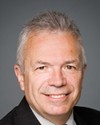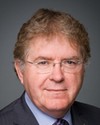That will be part of the doctrine we'll have to develop. Of course, running these things in a relatively small theatre, represented by Afghanistan or a portion of the Arabian Sea, within miles of a ship is a much different thing from now running them across 2,000 miles of very harsh area. That is a challenge we're looking forward to having as we develop recommendations for the government on which unmanned aerial vehicles would best meet the requirement.
I think what's also heartening about the Canada First defence strategy is that it foresaw a system of systems, which was probably a little ahead of its time in 2008 when it was published, because that system of systems, although many countries speak of it now, has been slow to develop. As you're aware, we really only have the Aurora long-range patrol aircraft that can get up to the north with presence and remain in an area. What we need, of course, to back up a long-range patrol aircraft, whichever one replaces the Aurora, would have to be a mix of high-altitude/medium-altitude unmanned aerial vehicles.
This also speaks to our developing capabilities in space, with the Canadian Space Agency. That really does provide us with more of a “through the straw” look. If it's queued by the north warning system and radar capability, then you can be looking in an area, have a UAV come over to look more carefully, and then have a response from a queued Aurora, which right now would be queued by nothing except the need to put a patrol aircraft up there at this time.
This system of systems is a very powerful way forward. We're looking forward to the technologies catching up to what we saw or hoped they would be when it was written into the Canada First defence strategy in 2008.




